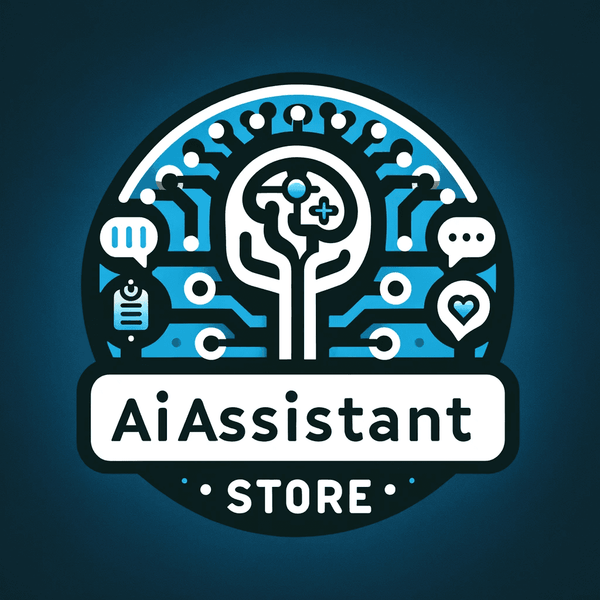So, you want to build an AI? Smart move - but let’s not pretend it’s a straight line. Whether you're dreaming of a chatbot that finally "gets it" or something fancier that parses law contracts or analyzes scans, this is your blueprint. Step-by-step, no shortcuts - but plenty of ways to mess up (and fix it).
Articles you may like to read after this one:
🔗 What Is Quantum AI? – Where Physics, Code, and Chaos Intersect
A deep dive into the surreal fusion of quantum computing and artificial intelligence.
🔗 What Is Inference in AI? – The Moment It All Comes Together
Explore how AI systems apply what they've learned to deliver real-world results.
🔗 What Does It Mean to Take a Holistic Approach to AI?
See why responsible AI isn’t just about code - it’s about context, ethics, and impact.
1. What's Your AI Even For? 🎯
Before writing a single line of code or opening any flashy dev tool, ask yourself: what exactly is this AI supposed to do? Not in vague terms. Think specific, like:
-
“I want it to classify product reviews as positive, neutral, or aggressive.”
-
“It should recommend music like Spotify, but better - more vibes, less algorithmic randomness.”
-
“I need a bot that answers client emails in my tone - sarcasm included.”
Also consider this: what’s a “win” for your project? Is it speed? Accuracy? Reliability in edge cases? That stuff matters more than which library you pick later.
2. Collect Your Data Like You Mean It 📦
Good AI starts with boring data work - really boring. But if you skip this part, your fancy model will perform like a goldfish on espresso. Here’s how to avoid that:
-
Where’s your data coming from? Public datasets (Kaggle, UCI), APIs, scraped forums, customer logs?
-
Is it clean? Probably not. Clean it anyway: fix weird characters, drop corrupted rows, normalize what needs normalizing.
-
Balanced? Biased? Overfit waiting to happen? Run basic stats. Check distributions. Avoid echo chambers.
Pro tip: if you're dealing with text, standardize encodings. If it’s images, unify resolutions. If it’s spreadsheets…brace yourself.
3. What Kind of AI Are We Building Here? 🧠
Are you trying to classify, generate, predict, or explore? Each goal nudges you toward a different toolset - and wildly different headaches.
| Goal | Architecture | Tools/Frameworks | Caveats |
|---|---|---|---|
| Text generation | Transformer (GPT-style) | Hugging Face, Llama.cpp | Prone to hallucination |
| Image recognition | CNN or Vision Transformers | PyTorch, TensorFlow | Needs a LOT of images |
| Forecasting | LightGBM or LSTM | scikit-learn, Keras | Feature engineering is key |
| Interactive agents | RAG or LangChain w/ LLM backend | LangChain, Pinecone | Prompting & memory essential |
| Decision logic | Reinforcement Learning | OpenAI Gym, Ray RLlib | You'll cry at least once |
It’s fine to mix and match too. Most real-world AIs are stitched together like Frankenstein’s second cousin.
4. Training Day(s) 🛠️
Here’s where you turn raw code and data into something that maybe works.
If you're going full stack:
-
Train a model using PyTorch, TensorFlow, or even something old school like Theano (no judgment)
-
Split your data: train, validate, test. Don’t cheat - random splits can lie
-
Tweak things: batch size, learning rate, dropout. Document everything or regret it later
If you're prototyping fast:
-
Use Claude Artifacts, Google AI Studio, or OpenAI’s Playground to “vibe code” your way into a working tool
-
Chain outputs together using Replit or LangChain for more dynamic pipelines
Be ready to trash your first few attempts. That’s not failure - it’s calibration.
5. Evaluation: Don’t Just Trust It 📏
A model that performs well in training but fails in real use? Classic rookie trap.
Metrics to consider:
-
Text: BLEU (for style), ROUGE (for recall), and perplexity (don’t get obsessed)
-
Classification: F1 > Accuracy. Especially if your data is lopsided
-
Regression: Mean Squared Error is brutal but fair
Also test weird inputs. If you’re building a chatbot, try feeding it passive-aggressive customer messages. If you’re classifying, throw in typos, slang, sarcasm. Real data is messy - test accordingly.
6. Ship It (But Carefully) 📡
You trained it. You tested it. Now you want to unleash it. Let’s not rush.
Deployment methods:
-
Cloud-based: AWS SageMaker, Google Vertex AI, Azure ML - fast, scalable, sometimes expensive
-
API-layer: Wrap it in FastAPI, Flask, or Vercel Functions and call it from wherever
-
On-device: Convert to ONNX or TensorFlow Lite for mobile or embedded use
-
No-code options: Good for MVPs. Try Zapier, Make.com, or Peltarion to plug into apps directly
Set up logs. Monitor throughput. Track how the model reacts to edge cases. If it starts making weird decisions, roll back quick.
7. Maintain or Migrate 🧪🔁
AI isn't static. It drifts. It forgets. It overfits. You need to babysit it - or better, automate the babysitting.
-
Use model drift tools like Evidently or Fiddler
-
Log everything - inputs, predictions, feedback
-
Build in retraining loops or at least schedule quarterly updates
Also - if users start gaming your model (e.g., jailbreaking a chatbot), fix that fast.
8. Should You Even Build from Scratch? 🤷♂️
Here’s the brutal truth: building an LLM from scratch will financially destroy you unless you’re Microsoft, Anthropic, or a rogue nation-state. Seriously.
Use:
-
LLaMA 3 if you want an open but powerful base
-
DeepSeek or Yi for competitive Chinese LLMs
-
Mistral if you need lightweight but potent results
-
GPT via API if you’re optimizing for speed and productivity
Fine-tuning is your friend. It’s cheaper, faster, and usually just as good.
✅ Your Build-Your-Own-AI Checklist
-
Goal defined, not vague
-
Data: clean, labeled, (mostly) balanced
-
Architecture selected
-
Code and train loop built
-
Evaluation: rigorous, real
-
Deployment live but monitored
-
Feedback loop locked in

